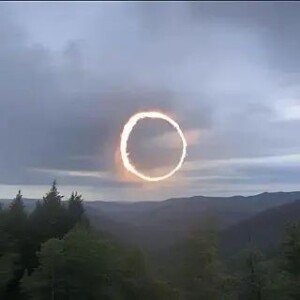
THE RISE OF PORTALS & THE PARALELL UNIVERSE
Parallel Universe
Could 2024 be the year humans open the first portal to a shadowy dimension which mirrors our own world?
Scientists in Oak Ridge National Laboratory in eastern Tennessee hope so, and have completed building equipment they are to test this summer which may allow us the first glimpse of a parallel universe which could be identical in many ways to our own, with mirror particles, mirror planets and possibly even mirror life.
That is according to Leah Broussard, the physicist behind the project, who described the attempt to reveal a hidden shadow world as “pretty wacky” in an interview with NBC last week.
The discovery of a concealed mirror world may sound like science fiction from the Stranger Things series, but it has been repeatedly suggested by physicists as a tempting means of explaining anomalous results. However, as yet, hard evidence such a realm exists has refused to manifest itself.
One set of anomalous results, and the ones which inspired the research, date back to the 1990s, when particle physicists were measuring the time it took for neutron particles to break down into protons once they were removed from an atom’s nucleus.
Two separate experiments saw the neutrons broke down at differing rates, instead of decaying and becoming protons at exactly the same rate, as was expected.
In one, the free neutrons were captured by magnetic fields and herded into laboratory bottle traps, and in the other they were detected by the subsequent appearance of proton particles from a nuclear reactor stream.
Those particles fired out in the stream from the nuclear reactor lived on average for 14 minutes and 48 seconds – nine seconds longer than those from the bottle traps.
It may sound like a small difference, but it has troubled scientists.
But the existence of a mirror world offers a credible explanation: That there are two separate neutron lifetimes, and it could be that around 1 per cent of neutrons could be crossing the divide between our reality and the mirror world before crossing back and then emitting a detectable proton.
The new experiment will fire a beam of neutrons at an impenetrable wall. On the other side of the wall, a neutron detector will be set up, which normally would expect to detect nothing.
More Episodes
 2024-05-13
2024-05-13
 2024-05-08
2024-05-08
 2024-05-01
2024-05-01
 2024-04-29
2024-04-29
 2024-04-23
2024-04-23
 2024-04-22
2024-04-22
 2024-04-16
2024-04-16
 2024-04-15
2024-04-15
 2024-04-11
2024-04-11
 2024-04-07
2024-04-07
Create your
podcast in
minutes
- Full-featured podcast site
- Unlimited storage and bandwidth
- Comprehensive podcast stats
- Distribute to Apple Podcasts, Spotify, and more
- Make money with your podcast
It is Free
- Privacy Policy
- Cookie Policy
- Terms of Use
- Consent Preferences
- Copyright © 2015-2024 Podbean.com






